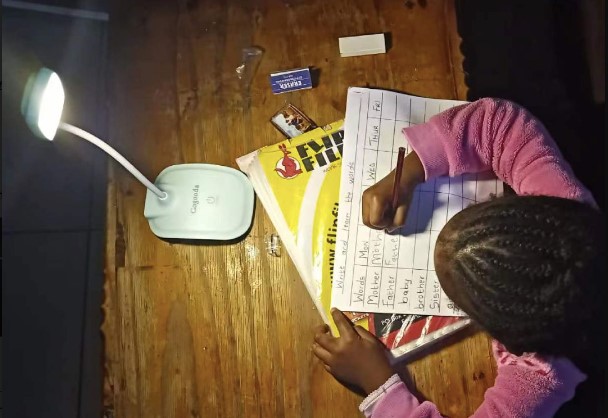Hardware
Gadget of the Week: Let there be light -within budget
During load-shedding, one can keep the lights on throughout a home with inexpensive LED options, writes ARTHUR GOLDSTUCK.
What is it?
Now that loadshedding is a permanent part of South Africans’ lives – at least for the next few years – no one can pretend that power supply will soon return to normal. That means we have to adapt our lifestyles for the long term, rather than relying on temporary fixes.
For this reason, an increasing number of people are investing in solar panels, petrol-driven generators and battery-powered inverters that keep the lights and essential appliances going when Eskom switches it all off.
The problem is that these are often expensive solutions, requiring investments of tens of thousands of rand. In the case of generators, they are both noisy and dirty, reducing the quality of air in one’s immediate environment.
However, depending on needs, such expensive or problematic solutions are not necessary. In the coming months, we will regularly look at options for overcoming loadshedding, with an emphasis on efficiency, cost-effectiveness, and specific needs.
This week, we look at one of the cheapest possible solutions to keep the lights on. Typical load-shedding last between two and four hours, which means that one can prepare the likes of smartphones and laptops in advance, ensuring they are fully charged in order to keep going through load-shedding. But, at night, the next most common need is light.
While we can go without TV for a few hours – as difficult as that may seem to some – we generally need to illuminate our environment.
The most common solution that has emerged for this requirement is the LED light-bulb, which screws or snaps into regular bedside lamp-style sockets, charge while there is power, and automatically turn to their stored power when Eskom strikes. However, these are not very versatile, as they are confined to the fixed lamp sockets where they are installed. They have a typical battery life of 2 to 3 hours, meaning they usually don’t last through the longer periods of load-shedding, unless one has invested in more expensive versions.
The best solution we have found for both battery life and versatility is the LED Desk Lamp, which charges via a USB port, and keeps going for anywhere from 4 to 8 hours. Depending on the specific model, it usually has three brightness levels.
This means one can set it on a minimum level simply to give enough light to move around, an intermediate level that is suitable for working on a laptop to light up the keyboard, and a maximum level that can be used for reading. Again, depending on the model, it may not be adequate for reading small print.
The mode is set via a touch-sensitive dimmer on the base of the lamp. While it uses a USB cable to charge, once in use, it is wireless and completely portable. Due to its low cost, one can deploy one in every room in a house without a heavy investment. For light-intensive requirements, like reading small-print, one can then cluster a few from rooms that are not being used.
The neck of the lamp is flexible, so the light can be directed precisely where it is needed.
What does it cost?
The LED Desk Lamp is available from Takealot.com for between R150 and R300, depending on model and available deals. More elaborate models, such as one with a rotating head, can cost from R300 up. Keep an eye out for special deals, which keep coming up.
Why does it matter?
Then time has come to invest in long-term lighting solutions, but times are also tight, so cost-effective solutions are critical.
What are the biggest negatives?
· The LED lamp is not very sturdy and can easily be damaged.
· The warranty is for six months, while the units are likely to last between six and 12 months.
What are the biggest positives?
· Half-a-dozen units will cost a fraction of the price of a generator.
· It is unintrusive, portable and versatile.
· It has a flexible neck that can be adjusted in any direction.
* Arthur Goldstuck is founder of World Wide Worx and editor-in-chief of Gadget.co.za. Follow him on Twitter on @art2gee

















